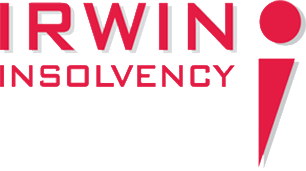How Long Does a Company Voluntary Arrangement (CVA) Take?
When your company is heavily in debt, time is of the essence, especially if creditors are taking or threatening to take legal action. So if you’re eager to set up a company voluntary arrangement to help the business reduce its unsecured debt and make affordable repayments, you’re probably wondering how long the CVA process is likely to take, from your initial contact with our licensed insolvency practitioners to the start of the agreement. On a related note, clients often ask us ‘how long does a CVA last once it’s in place?’
We’ll address those queries in the following guide to the company voluntary arrangement procedure and its timescales. When you’re ready to get the ball rolling, simply get in touch with the team here at Irwin Insolvency. We’ll be able to advise you further about the company voluntary arrangement process with your business in mind – and get to work quickly if you decide to proceed.
What Is the CVA Process for a Company?
You’ll be pleased to hear that creating and implementing a company voluntary arrangement normally takes just six to eight weeks. Let’s explore the key stages in the CVA process to give you a clear understanding of how this insolvency procedure works and what should happen when.
-
Initial Assessment
It’s typically the directors who initiate the company voluntary arrangement procedure by asking an insolvency practitioner to assess the firm’s circumstances and whether a CVA is the right debt solution. Companies that are well-suited to CVAs are insolvent but have sound business practices plus trading projections that point to a realistic prospect of recovery. After all, creditors want to be confident that this option will offer them better returns than, say, liquidation.
-
Writing the Proposal
If the assessment suggests a company voluntary arrangement is in the best interests of both the company and its creditors, the directors can ask the IP to assume the role of nominee and continue the CVA process. This involves reviewing the company’s financial position and outlook in considerable detail. The IP will use that review and their insolvency expertise to draft a strong CVA proposal, outlining an affordable, long-term repayment plan covering 20-100% of the debt and showing how the firm can reduce running costs and boost working capital. Input from directors helps to shape the proposal.
-
Distributing the Proposal
Producing and distributing the proposal takes about four weeks. The insolvency practitioner files it at court and sends copies to creditors, who are then given three weeks to consider its terms before the creditors’ and shareholders’ meetings are held.
-
Voting on the Proposal
The meetings are chaired by the IP; creditors may ask for amendments to be made to the proposal. At this stage of the company voluntary arrangement process, voting takes place. If a minimum of 75% of creditors (by unsecured debt value) and 50% of shareholders vote to accept the proposal, it’s approved. There’s a good chance of a positive outcome – the IP will have aimed to make the proposal fair and watertight.
Within four days, the IP sends reports about the meetings to the court and creditors.
-
Implementing and Supervising the CVA
At this point in the company voluntary arrangement procedure, the CVA is implemented. A major benefit for the company is it binds all unsecured creditors and prevents or curbs legal action concerning unsecured debt.
The CVA process continues with the insolvency practitioner becoming the supervisor, a role they’ll hold for several years. They divide the firm’s monthly repayments among creditors, as well as assisting directors in streamlining operations.
How Long Does a CVA Last?
The company is embarking on a lengthy journey, but each repayment takes it a step closer to recovery. How long does a CVA last? Usually three to five years, with the insolvency practitioner providing specialist insight and administrative support throughout.
If the repayment schedule is undermined by exceptional unforeseen circumstances, it might be possible to negotiate an extension of up to two years – but otherwise the firm must make every effort to stick to the original plan.
Upon successful completion of the company voluntary arrangement process, any remaining debt is written off, as per the agreement’s terms. The IP issues a CVA completion certificate, and the business emerges from the CVA process financially and operationally fitter.
Need a CVA? Irwin Insolvency Can Help
We’ve been helping to rescue debt-ridden companies for over 25 years. Our insolvency practitioners have the expertise to set up and manage a CVA tailored to your company’s needs.
The company voluntary arrangement process could help your business overcome debt problems – call Irwin Insolvency today on 0800 254 5122.
More advice on Company Voluntary Arrangements from Irwin Insolvency
The complete guide to Company Voluntary Arrangements
Company Voluntary Arrangement (CVA) vs Administration
Company Voluntary Arrangement (CVA) with a Moratorium
How to fast-track Company Voluntary Arrangements
Get in Touch
With over 25 years of experience, helping people just like you, we are committed to providing you with all the help and advice you need during these challenging times. Simply give us a call, drop us an email or fill in the form to find out how we can help you.
Our Office
Irwin & Company,
Station House,
Midland Drive,
Sutton Coldfield,
West Midlands B72 1TU
Call us
0800 254 5122
Email us
[javascript protected email address]
Fill in the form below and a member of our expert team will be in touch to discuss how we can help you.
"*" indicates required fields

